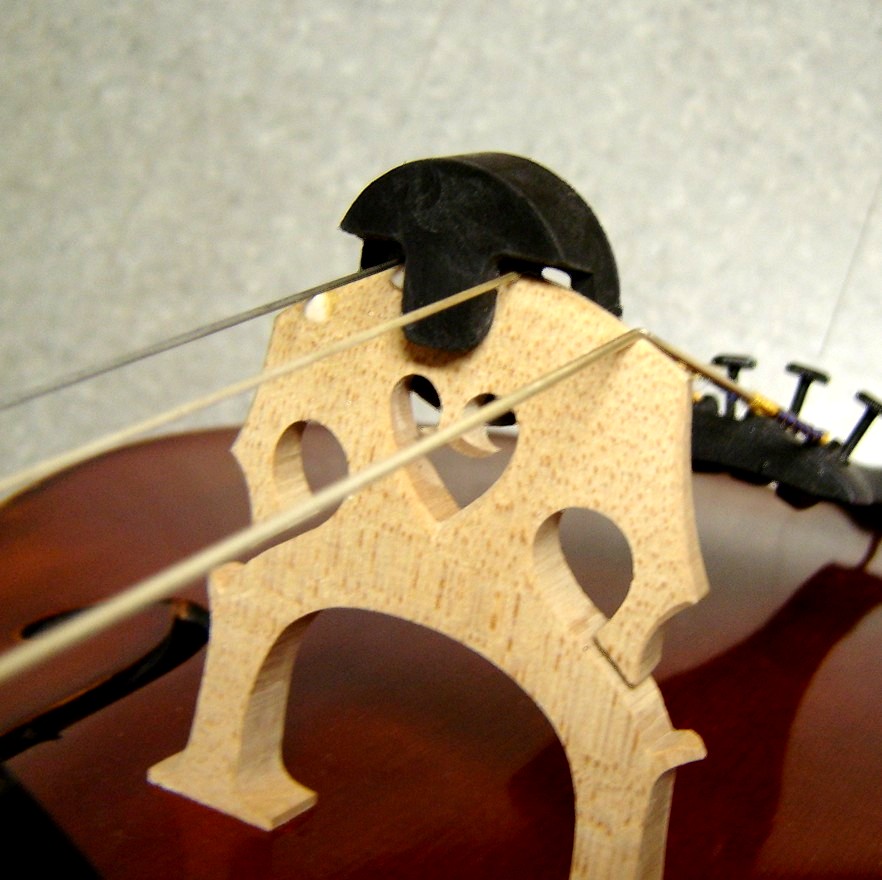Instrument Mutes
Mutes reduce the volume of an instrument by dampening its tone.

There are different types of mutes, some that are threaded on just one string, some on two and others that slide against the entire top of the bridge.
String instrument mutes are placed over the top of the bridge. Mutes diminish the vibration of the bridge and create beautiful sound qualities.
The reason mutes alter an instrument’s tone is that a mute muffles audible string overtones. Mutes are most often applied when performing passages that are soft and add vocal qualities which are soulful in nature.
When composers wish for their music to be performed with a mute, the words con sordino is notated directly before the affected passage.
In order to indicate that mutes should be removed and return to normal playing, the words senza sordino is notated after the affected passage.
Professional musicians write a block looking capital letter M in the music, to make it easier to notice muted sections. As a visual reminder to remove the mut from the bridge, a block looking upside-down M is notated.
There is an art to putting on and removing mutes with speed and efficiency. Knowing when to place the mute on the bridge ahead of time is always a good start. When applying the mute to the bridge, always use care. Be gentle and never move or alter the bridge’s position in any manner.
Mutes used to be made primarily from ebony or rosewood and metals. Most professional orchestra players use mutes that are removable. They are affixed to the string, threaded between the tailpiece and the bridge, not within the playing area side of the bridge. This location makes placing and removing mutes extremely efficient.
When wishing to not disturb others, mutes with greater density have been invented, and are logically called Practice Mutes. These heavy mutes are nicknamed “Hotel Mutes” since they quiet the instrument a great deal.
Practice mutes are made from rubber or metal.






